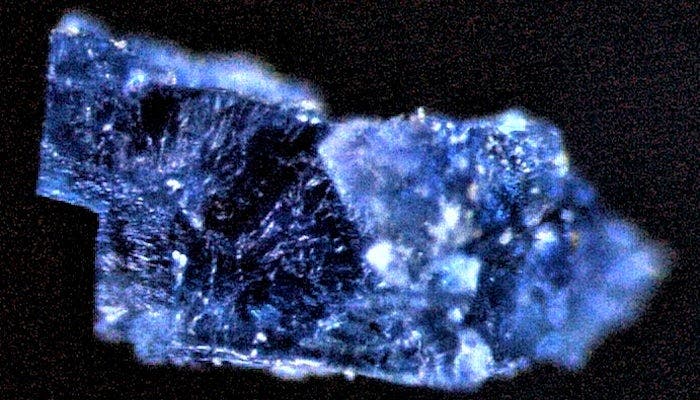New research raises an intriguing possibility — that of an alien ocean world seeding life throughout space.

Image credits Queenie Chan / The Open University.
In 1998, a group of friends had to cut their basketball game short for a somewhat unexpected reason — a meteorite decided to crash just yards away from the hoop.
Seeds of life
But that seems to have been fortune’s plan all along, as the rock seems to be a harbinger of life rather than death. Initial analysis of the chunk of meteorite, along with another that fell in Morocco the same year, revealed traces of liquid water and other organic components that underpin life. Now, an in-depth chemical analysis points to an ancient ocean world as the likely cradle of these organic compounds. It’s possible that such material could seed life on planets they land on, including the early Earth.
Initial analysis revealed that the main elements inside the meteorites include liquid water and amino acids. Taken together, that’s not really news — we’ve found such compounds in meteorites and in space before. They might not be as rare as we tend to believe. However, we’d never seen them together in a single alien sample before these two bits of space rock were first analyzed.
That made the meteorites really special, so they were preserved at NASA’s Johnson Space Center. Keen to find out more, an international team of researchers has recently sampled the organic compounds locked away in these meteorites’ 2-mm long salt crystals using an X-ray beamline and microscope, as well as other chemical experiments.
Along with traces of liquid water, they report finding organogenic elements like carbon, oxygen, and nitrogen, along with more complex organic compounds such as hydrocarbons and amino acids. In other words, we’ve found the fundamental building blocks of life as we know it right next to water — in a space rock.
“This is really the first time we have found abundant organic matter also associated with liquid water that is really crucial to the origin of life and the origin of complex organic compounds in space,” says study lead author Queenie Chan.
“We’re looking at the organic ingredients that can lead to the origin of life.”
After discovering this exciting chemical cocktail, the next step was to see where the meteorites came from, and where they inherited their organic matter. Their complex chemistry (in comparison to other meteorites) makes it unlikely that they’re simply left-over bits from the creation of the Solar System. Instead, the team narrowed their search to an ancient ocean world — similar to today’s Enceladus or Ceres. Water and ice plumes (which are relatively commonly-seen on such bodies) shooting out into space could have doused the meteorites, locking the planet’s organic compounds in the salt crystals.
According to co-author Yoko Kebukawa, the organic matter seen in these samples is “somewhat similar” to what we’ve previously found in primitive meteorites. The results of the analysis support the idea that the “organic matter originated from a water-rich, or previously water-rich parent body”, she explains, adding that it’s “possibly Ceres“.
Encased in the salt crystals, such biomolecules could safely make it across the cosmos. Even microscopic life could survive on a space-cruise within a similar system, the team says. Once in space, all kinds of things could happen to help spread these seeds of life around — collisions between asteroids, for example, would push them along or shatter them into even more ‘seeds’. After making it to a planet, such rocks could jump-start life on the surface.
“Everything leads to the conclusion that the origin of life is really possible elsewhere,” Chan adds. “There is a great range of organic compounds within these meteorites, including a very primitive type of organics that likely represent the early solar system’s organic composition.”
Next, the team plans to look at other crystals embedded in the meteorites that haven’t yet been analyzed. Who knows what we may find? Maybe a tiny alien bacterium swimming around?
The paper “Organic matter in extraterrestrial water-bearing salt crystals” has been published in the journal Science.


